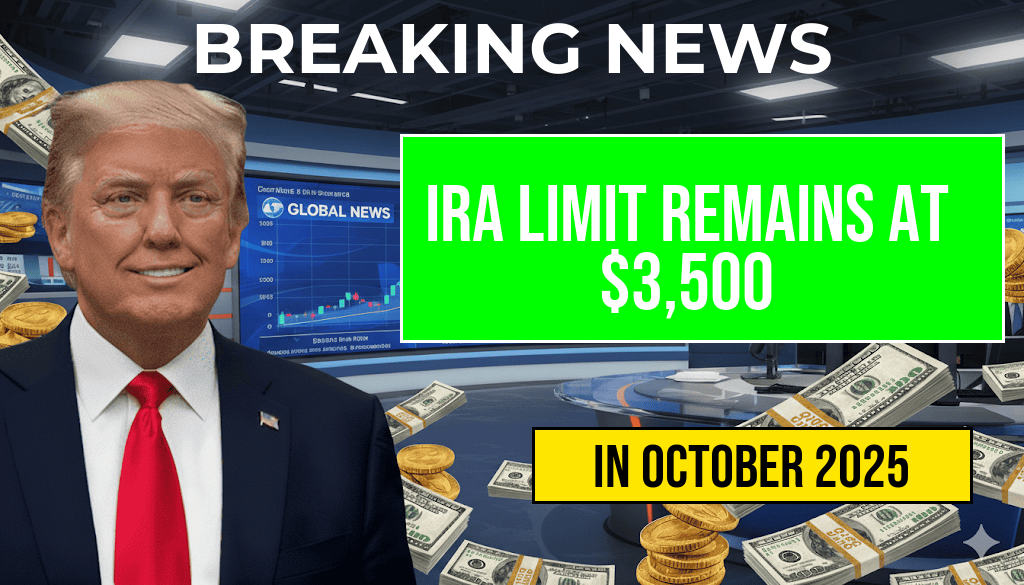The Internal Revenue Service (IRS) has announced that the annual contribution limit for Individual Retirement Accounts (IRAs) will remain unchanged at $3,500 for the upcoming tax year. This decision comes amid discussions about inflation adjustments and the broader landscape of retirement savings. The unchanged cap applies to both traditional and Roth IRAs, affecting millions of American savers who aim to maximize their tax-advantaged retirement contributions. While some anticipated an increase based on recent inflation rates, the IRS opted to keep the limit steady, citing administrative simplicity and budget considerations. This static cap underscores the ongoing challenges many Americans face in boosting retirement savings, especially as inflation continues to influence household budgets. For savers, understanding the implications of this unchanged limit is essential for effective financial planning and optimizing tax benefits.
Details of the IRA Contribution Limits
Current Contribution Cap
| Type of IRA | Contribution Limit | Additional Catch-Up Contributions (for age 50 and over) |
|---|---|---|
| Traditional IRA | $3,500 | $1,000 |
| Roth IRA | $3,500 | $1,000 |
The IRS’s decision aligns with the contribution limits established in the previous year, despite inflationary pressures that prompted speculation about possible increases. The unchanged cap signifies a cautious approach by regulators, balancing inflation adjustments with concerns about potential overcontribution and tax revenue impacts.
Impacts on Retirement Planning
For Savers Under 50
Individuals under age 50 can contribute up to $3,500 annually across their IRAs, which may limit their ability to accelerate retirement savings compared to previous years when limits were higher or expected to increase. Financial advisors suggest that savers look for alternative savings vehicles or consider increasing contributions to employer-sponsored plans like 401(k)s, which often have higher limits.
For Those Aged 50 and Over
Catch-up contributions remain at $1,000, allowing older savers to contribute up to $4,500 annually. This provision provides some flexibility for individuals nearing retirement age to boost their savings. However, with the cap unchanged, the overall contribution growth potential is limited, emphasizing the importance of early and consistent contributions.
Broader Context and Future Outlook
Inflation and Contribution Limits
Historically, IRA contribution limits are adjusted annually for inflation, but the recent decision reflects a cautious stance by the IRS. According to the Wikipedia entry on inflation adjustments, the IRS considers multiple economic factors when setting these limits, including economic growth, tax policy objectives, and administrative considerations.
Potential Changes on the Horizon
Some policymakers and financial experts have argued for more aggressive increases in IRA contribution limits to help address the retirement savings shortfall faced by many Americans. Legislation proposals, like the Secure Act 2.0, aim to gradually raise these limits, but no official changes have been enacted for 2024. Monitoring legislative developments remains crucial for savers seeking to maximize their retirement contributions.
Additional Retirement Savings Strategies
- Maximize employer-sponsored plans: Contributing the maximum to 401(k)s or similar plans often offers higher annual limits and potential employer matching.
- Utilize Health Savings Accounts (HSAs): These accounts offer tax advantages and can supplement retirement savings.
- Explore catch-up contributions: For those over 50, making full use of catch-up provisions can significantly enhance retirement funds.
While the static IRA contribution limit may seem restrictive given inflationary trends, it underscores the need for a diversified approach to retirement planning. Savers are encouraged to review their overall strategy regularly and consider multiple avenues for building a financially secure retirement.
Frequently Asked Questions
What is the current IRA contribution limit for 2024?
The IRA contribution limit remains unchanged at $3,500 for the year 2024.
Has the IRA contribution limit increased this year?
No, the contribution limit has stayed the same at $3,500 and has not increased this year.
Who is eligible to contribute up to $3,500 to an IRA?
Individuals who meet the income requirements and have earned income can contribute up to $3,500 to their IRA for the year.
Does the unchanged IRA contribution limit affect retirement savings plans?
Yes, the unchanged limit means contributions are capped at $3,500, which may influence retirement savings strategies for some individuals.
Are there any plans to increase the IRA contribution limit in the near future?
As of now, there are no announced plans to increase the IRA contribution limit. It remains at $3,500 for the current year.






